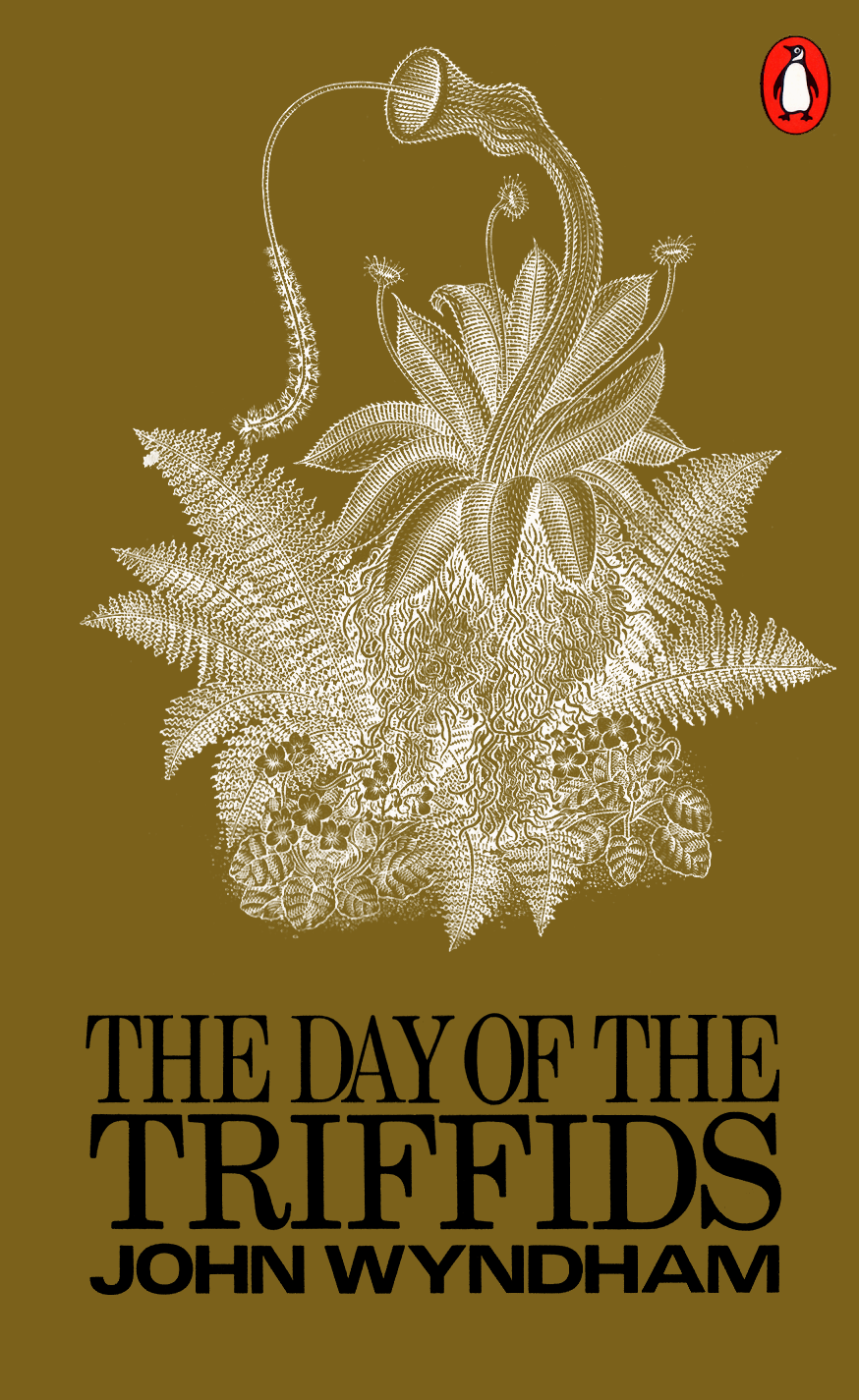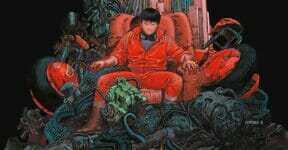Written by John Wyndham and published in 1951, The Day of the Triffids remains standing tall as one of science fiction greats throughout the decades. It has been in continuous print ever since and adapted into various formats including a feature-length film, a stage play, BBC TV series, BBC Radio and World Service productions, a graphic novel, and a comic serialization.

The book is an enduring work for good reasons: it does an impeccable job of predicting biowarfare technologies and weapons of mass destruction while offering an intricate depiction of Cold War anxiety and exploration of individualism in times of major social change.
The narrative opens with Bill Masen, a biologist being hospitalized in London for an eye injury. He was working on a carnivorous and venomous plant – called triffid – when it splashed poison and rendered him temporarily blind. The injuries prevent him from being exposed to a meteor shower that subsequently causes sudden worldwide blindness. Now that they have removed the bandages from his eyes, Masen comes to realize that he is one of the few people saved from the catastrophe.
There is anarchy all around, not just in London, but everywhere else. Masen soon bumps into Josella, another sighted person in a mostly sightless world. They leave the city together in search of a refuge. Survival will not be easy, not only because of the collapse of society but also the triffids. As a biologist, Mases suspects the triffids are genetically engineered plants by the Soviet Union, released into the wild years ago.
Triffids are capable of locomotion by pulling their roots from the ground and growing to seven feet tall. Just one lash of their venomous stinger can kill an adult person. Once a triffid lands an attack, it roots itself beside the killed victim and feeds on the body. It might not be much of a problem if they kept the plants in a secure facility, but that is not the case here. Triffids are everywhere all over the globe. Blind people are practically defenseless.
On the surface, it is a story about the triumph of nature over human civilization in a post-apocalyptic backdrop. Triffids are not invaders from outer space planning to colonize the Earth; the over-engineered carnivorous plants come into existence at the peak of humanity’s scientific hubris. Nature neither needs nor wants the triffids to begin with, and they occupy a strange place in the ecological food chain thanks to the meteor shower; they devour humans. Much of the novel feels like one big question about the relative value of humanity and the possibility of regeneration in the face of Mother Nature. There isn’t any simple answer either.
The threat of unchecked weaponry development comes rather explicitly in the latter part of the novel as Masen hypothesizes the meteor shower – the event behind the worldwide blindness problem – may have been a satellite weapon system triggered by accident.
Cold War was in its infancy when the novel came out, but Wyndham gave it a noticeable presence in the story. Triffids are allegedly the results of a bioweapon experiment on the Soviet Union’s part, whereas the meteor shower offers a depiction of a WMD above the atmosphere, capable of inflicting disaster of a biblical scale at any moment’s notice. It is even safe to say that blindness serves as an excellent allegory for the fear of the unknown – the unseen mystery hiding behind the Iron Curtain. Life with the triffids and blindness is as frightening of a puzzle as dealing with the Soviet Union.
When Triffids and WMD are put into a single book, the result is a clear Darwinian parable sprinkled with heavy rains of Cold War paranoia. The journey to survival depicted in the book shows how a post-apocalypse situation may lead to unusual ideas of reorganizing society while addressing contemporary predicaments.
The case is made clear as soon as the novel gradually leaves behind the depictions of the double disaster towards an exploration of ideologies, along with their virtues and shortcomings, in a world that has gone through substantial changes. It is the part where The Day of the Triffids does its share of criticizing the irrational faith in religion, the belief that science will solve all of humanity’s problems and radical nationalism. Among the most interesting points, is how the narration seems to wonder (if not worry) about the eventual fate of humankind in light of Darwinism’s evolution by natural selection.
The Day of the Triffids has become an exemplary work of science fiction and a literary model to offer a gripping narration that humans’ advances in technology and science can in fact contribute a great deal to the collapse of civilization. The triffids are not the ultimate culprit of the apocalypse; the plants only gain the upper hand following a human error of accidentally setting off a weaponized orbital satellite.
We think The Day of the Triffids works well because it features all the best elements of the post-apocalyptic genre in a coherent yet fantastical story relevant to its time of publication. The book makes for a wide-open gateway for readers to indulge in an easily imaginable world while making observations of real-life perplexity. It might not be the first post-apocalyptic novel, but countless newer ones still use the same storytelling formula.
Have you read The Day of the Triffids? Do you think the storytelling and ideas are still relevant today? We’d love to hear from you.
Other things you might want to know:
Popular books by John Wyndham:
- The Secret People (1935), under the pseudonym John Beynon
- Foul Play Suspected (1935) by John Beynon
- Planet Plane (1936) by John Beynon republished as Stowaway to Mars and The Space Machine
- The Kraken Wakes (1953), published as Out of the Deeps in the United States
- The Chrysalids (1955), published in the United States as Re-Birth
- The Midwich Cuckoos (1957)
- The Outward Urge (1959), co-authored by John Wyndham and Lucas Parkes (the same person)
- Trouble with Lichen (1960)
- Chocky (1968)
- Web (1979)
- Plan for Chaos (2009)
Screen Adaptation of The Day of the Triffids:
- The Day of the Triffids (1963)
- The Day of the Triffids (1981 TV series)
- The Day of the Triffids (2009 TV Series)
Is it a series?
Sort of. In 2001, “The Night of the Triffids” – authored by Simon Clarke – was published as a sequel. The novel focuses on the adventures of David, son of Bill Masen, 25 years after the events told in the original book. Another sequel titled “The Land of the Triffids” by Simon Gould was published in 2016. It picks up the story exactly where Clark’s book left off. John Whitbourn published yet another follow-up “The Age of the Triffids” in 2020.
Check out other articles by month:







